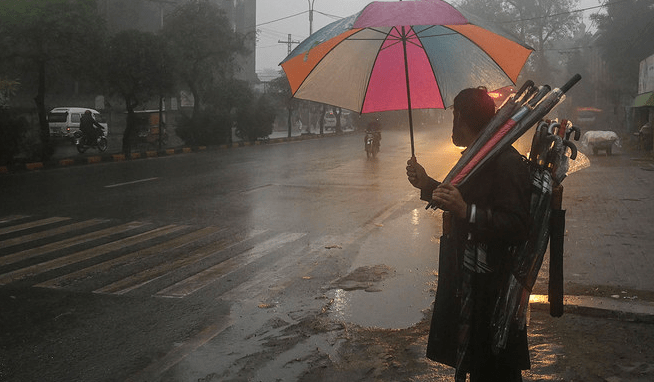The art of artificial intelligence: a recent copyright law development

Law firms Greenberg Traurig, LLP
April 22, 2022 – Over the past several years, comedy writer Keaton Patti has popularized “bot scripts,” in which he parodically imagines how a computer might synthesize 1,000 or more hours of information and then create its own imitative work. My personal favorite was a holiday-themed romantic comedy script, in which a “business man,” whose “hands are briefcases,” courts a “single mother,” who “cannot date because of a snow curse.”
This human-created work imitating artificial intelligence is almost certainly entitled to copyright registration. But what if someone actually created a bot to review 1,000 hours of romantic comedies and create a script amalgamating its learnings? Would that script be entitled to copyright registration? According to the U.S. Copyright Office’s Copyright Compendium, “the Office will refuse to register a claim if it determines that a human being did not create the work,” so the answer is currently no.
Stephen Thaler, a Ph.D. in Physics and the founder, president, and CEO of Missouri-based technology company Imagination Engines Incorporated, is trying to change the U.S. Copyright Office’s policy against copyright registration of AI-created works.
Register now for FREE unlimited access to Reuters.com Register
Thaler is a pioneer in creating artificial intelligence machines, including three versions of the “Creativity Machine” and the Device for the Autonomous Bootstrapping of Unified Sentience, nicknamed DABUS. DABUS is one of the world’s most-advanced AI systems because it not only compiles and analyzes existing information to produce optimal combinations, but also forms and tests consequence chains of each of the potential outcomes. Put simply, DABUS is to traditional AI what 3D is to 2D.
Thaler specifically piqued the interest of intellectual property lawyers because of his high-profile efforts to protect the fruits of the Creativity Machines’ and DABUS’s labors, both in patent offices around the world and in the U.S. Copyright Office.
Circa 2014, DABUS had seen thousands of photographs and was able to generate original artwork based on its machine learning. On a particular project, Thaler used the “random snipping of connections within DABUS to simulate a dying brain.” DABUS generated two-dimensional artwork that it named “A Recent Entrance to Paradise.” Despite looking like a floral-covered railway tunnel to the human eye, DABUS captioned (and apparently envisioned) the artwork as: “This facility was decommissioned in 1975. Administrative offices to right were abandoned then. Note the trans-dimensional rippling effect.”
In November 2018, Thaler filed a U.S. copyright application to register the two-dimensional artwork, listing “Creativity Machine” as the author and himself as the claimant, based on his ownership of the Creativity Machine.
In August 2019 and March 2020, the U.S. Copyright Office refused to register “A Recent Entrance to Paradise” because the work “lacks the human authorship necessary to support a copyright claim.” In May 2020, Thaler’s counsel submitted a second request for reconsideration, which was evaluated by the Copyright Review Board, the tribunal responsible for hearing appeals of copyright registration refusal decisions and the final level of appellate review within the U.S. Copyright Office.
On Feb. 14, 2022, the Copyright Review Board (CRB) rejected Thaler’s argument that the human authorship requirement was unconstitutional and unsupported by case law and issued a decision upholding the Copyright Office’s refusal to register “A Recent Entrance to Paradise.”
Although the precise question of whether AI-generated artwork could be registered with the U.S. Copyright Office appeared to be a question of first impression, the CRB leaned heavily on supposedly analogous CRB and federal court decisions involving works produced by nature and natural processes, such as a living garden, a jellyfish’s depictions, and a monkey’s photography.
The CRB also relied on U.S. Supreme Court decisions from 1884, 1954, and 1973 (long before AI existed) defining an “author” as “he to whom anything owes its origins” and 1976 Copyright Act language referring to an author’s children, widow, grandchildren, and widower — “terms that ‘all imply humanity'” — as judicial and legislative precedent.
And thus, even in the absence of an express human authorship requirement within the Copyright Act, the CRB held that “[b]ecause copyright law as codified in the 1976 Act requires human authorship, the [w]ork cannot be registered.” The CRB also rejected work-for-hire arguments.
Considering that Thaler’s primary challenge to the Copyright Office’s human authorship requirement was constitutionality, it was highly unlikely that the Copyright Office would have simply reversed its longstanding construction of the Copyright Act. Such a stark pivot in copyright policy will likely take the intervention of multiple federal courts or Congress.
When Thaler’s patent applications for AI-generated inventions were refused registration by the U.S. Patent Office, Thaler filed a lawsuit against the USPTO and its then-Acting Director under the Administrative Procedure Act, arguing “the USPTO is belatedly adopting luddism.” Reading the tea leaves, it appears likely that Thaler will soon file a complaint against the U.S. Copyright Office and the Register of Copyrights under the Administrative Procedure Act in the Eastern District of Virginia challenging the CRB’s decision or appeal the CRB’s decision to the U.S. Court of Appeals for the Federal Circuit.
And although the Copyright Office has occasionally reversed course in settlement of federal court lawsuits filed against it under the Administrative Procedure Act, such a reversal seems unlikely here because of the landmark nature of such a potential decision.
Notably, Thaler could have touted his human contribution to the overall creation of the machine-generated artwork (for example, classifying the Creativity Machine as “merely being an assisting instrument”), but instead represented that “A Recent Entrance to Paradise” was “autonomously created by artificial intelligence without any creative contribution from a human actor.”
This unequivocal statement appears to have been intentionally made to directly pressure test the U.S. Copyright Office’s human authorship requirement, rather than creating a potential middle ground for joint authorship between AI and humans and leaving the question of 100% AI authorship unresolved.
In a footnote, the Copyright Review Board noted that “the Board does not need to determine under what circumstances human involvement in the creation of machine-generated works would meet the statutory criteria for copyright protection.” But it is reasonable to expect that issue to be squarely in front of the Copyright Review Board sooner than later.
Unless and until the federal courts or Congress change the law with respect to copyright registrability of AI-generated works, the Copyright Review Board’s decision presents more questions than it answers. For example, what can third parties do with AI-created works such as “A Recent Entrance to Paradise”? Are such works to be treated like public domain works, free for anyone to commercialize?
Likewise, although federal courts require a copyright registration as a prerequisite to the filing of a copyright infringement lawsuit, the Digital Millennium Copyright Act (DMCA), which permits reporting of infringing user-generated content to a social media website (or other website with third-party content) does not. Accordingly, it is unclear whether sending a DMCA infringement notice to a website alleging infringement of an AI-generated work runs afoul of the DMCA’s prohibition against bad-faith notices, following the CRB’s ruling.
Finally, if AI-created works are not registrable as copyrights because they lack human authorship, are they likewise exempt from copyright infringement, at least until they are exploited?
The law typically lags technological advances, and artificial intelligence technology is no exception. As humans create artificial intelligence, and their artificial intelligence creates inventions and works of value, we can expect ample legal activity around the world seeking to protect the fruits of the artificial intelligence’s lucrative labor. Thaler’s “A Recent Entrance to Paradise” fight is likely only an entrance to artificial intellectual property jurisprudence.
Disclaimer: This article is presented for informational purposes only and it is not intended to be construed or used as general legal advice nor as a solicitation of any type.
Joel Feldman is a regular contributing columnist on trademark and copyright law for Reuters Legal News and Westlaw Today.
Register now for FREE unlimited access to Reuters.com Register
Opinions expressed are those of the author. They do not reflect the views of Reuters News, which, under the Trust Principles, is committed to integrity, independence, and freedom from bias. Westlaw Today is owned by Thomson Reuters and operates independently of Reuters News.





